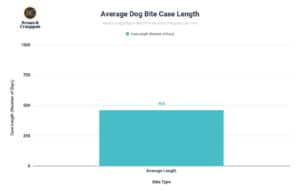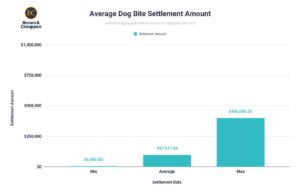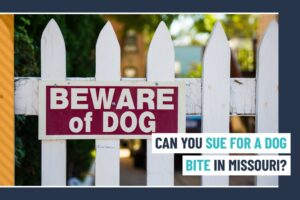Reporting a Dog Bite: Step by Step
Get to Safety First. Keep children, other household pets, and anyone else away from the dog. Do not attempt to capture or restrain the animal yourself.
Step 1: Seek Immediate Medical Attention
Why Urgency Matters: According to the Mayo Clinic, rabies is a deadly virus spread to people from the saliva of infected animals, usually through a bite. Once a person begins showing signs and symptoms of rabies, the disease nearly always causes death. Stray dogs are the most likely to spread rabies to people, in addition to bats, coyotes, foxes, raccoons, and skunks. Seek immediate medical care if you’re bitten by any animal or exposed to an animal suspected of having rabies. Based on your injuries and the situation in which the exposure happened, you and your doctor can decide whether you should receive treatment to prevent rabies.
Potential Pathogens: According to the Missouri Department of Health & Senior Services, direct animal trauma can transmit pathogens such as rabies; bacterial infections including Capnocytophaga canimorsus, Pasteurella multocida, and P. Haemolytica, Staphylococcus aureus, Streptococci, anaerobes, Moraxella, Corynebacterium, Neisseria, tetanus, and tularemia. Early medical care reduces the risk of these infections.
Step 2: Contact Law Enforcement or Animal Control
St. Louis County instructs residents not to complete and submit the Animal Bite-Injury Reporting Form or High-Risk Animal Exposure Form themselves. Instead, a medical professional, law enforcement agent, or St. Louis County Animal Care & Control staff member will submit these forms for you. The St. Louis County Animal Care & Control can be contacted at P: (314) 615-0650 | F: (314) 615-0651 | Animals.DPH@stlouiscountymo.gov.
Missouri regulations require dog bites to be reported to the local public health authority or to the Missouri Department of Health & Senior Services within 24 hours of first knowledge or suspicion (telephone, fax, or other rapid communication). Local public health agencies then coordinate with Missouri DHSS to investigate the incident.
Step 3: Provide Detailed Information for Officials
- Where, when, and how the bite occurred.
- As much information about the animal as possible: type, breed, color, size, weight, collar, clothing, and owner identity (if known).
- Photographs and video of the animal and your injuries, if available.
- Witness information: names, contact details, and any photos and videos captured.
- Medical documentation: when, where, what, and by whom you were treated.
Do not confront the animal or its owner directly. Date, time, place, and identifying descriptions are enough for Animal Control to conduct its own investigation.
Step 4: Understand How St. Louis County Classifies Bites
St. Louis County uses the Dunbar Bite Scale and indicates that Level 1 is not a bite and does not require a report.
Dr. Ian Dunbar Bite Scale, Association of Professional Dog Trainers:
- Level 1: Obnoxious or aggressive behavior but no skin-contact by teeth (Not a bite; no report filed).
- Level 2: Skin contact by teeth but no skin puncture. May include skin nicks (less than one tenth of an inch deep) and slight bleeding caused by forward or lateral movement of teeth against skin, but not vertical punctures.
- Level 3: One to four punctures from a single bite with no puncture deeper than half the length of the dog’s canine teeth. May include lacerations in a single direction, caused by the victim pulling a hand away, an owner pulling the dog away, or gravity (e.g., a small dog jumps, bites, and drops to the floor).
- Level 4: One to four punctures from a single bite with at least one puncture deeper than half the length of the dog’s canine teeth. May also involve deep bruising (dog held on and bore down) or lacerations in both directions (dog held on and shook its head side to side).
- Level 5: Multiple-bite incident with at least two Level 4 bites, or a multiple-attack incident with at least one Level 4 bite in each.
- Level 6: Victim deceased.
What Happens After You Report a Dog Bite?
- Official Investigation. Animal Control or police gather statements, photographs, and other evidence and conduct their own investigation.
- Rabies quarantine or testing. Any animal bite that breaks the skin triggers a 10-day rabies quarantine for dogs. Quarantine may take place at an animal control facility or veterinary clinic – at the owner’s expense under Mo. Rev. Stat. 322.140 – or, in limited circumstances, at the owner’s home. Local public health agencies will contact the animal’s owner to arrange the quarantine at an approved facility or veterinarian, in accordance with Missouri DHSS guidance. Wild animals are never quarantined; they are euthanized and tested for rabies. In some cases, the animal may be euthanized so brain tissue can be tested for rabies (there is no verified method of testing for rabies in an animal that does not require the death of the animal).
- Civil Liability. Because Missouri follows strict liability for dog bites, the owner or possessor is responsible even if the dog had no prior history and the owner had no prior knowledge of viciousness. You may be able to file a dog bite lawsuit against the dog owner. Contacting a Missouri dog bite attorney can significantly improve your chances of obtaining fair compensation and protect your rights.
- Criminal Penalties. Where the facts meet the dangerous-dog statute, authorities may pursue charges. For repeat or fatal attacks, the law requires seizure and destruction of the dog within 10 days. A review Mo. Rev. Stat. 578.024 provides the following penalties:
- Class B Misdemeanor: Keeping of a dangerous dog that has previously bitten a person or domestic animal without provocation and bites any person on a subsequent occasion.
- Class A Misdemeanor: A dangerous-dog attack that causes serious injury.
- Class D Felony: A dangerous-dog attack that causes death.
Why You Should Report a Dog Bite in Missouri
Reporting a dog bite isn’t just red tape, it’s the foundation of a Missouri dog bite claim.
Protect Your Health and Everyone Else’s. Reporting a dog bite starts the mandatory 10-day rabies quarantine or testing period. Alerts public-health officials to pathogens such as rabies, Capnocytophaga, and Pasteurella, limiting further exposures.
Lock-in Crucial Evidence for Your Missouri Dog Bite Claim. Time-stamps the incident, confirms location, and identifies the dog and its owner before memories fade or witnesses disappear.
Help Authorities Identify and Control Dangerous Dogs. Animal Control uses bite reports to flag repeat offenders, enforce confinement orders, and – when necessary – pursue criminal charges against the owner.
Bottom line? If it breaks the skin, report the bite.
Brown & Crouppen Can Help with Your Dog Bite Claim
At Brown & Crouppen Law Firm, our experienced dog bite attorneys are here to help you. We work on a contingency fee basis, meaning you pay nothing unless we win your case. With over $1 billion won in personal injury cases, we’re committed to achieving justice for our clients. We’ll help determine fault, build a strong claim, and fight for the compensation you deserve.
Getting started with your case is easy. Just call us at 800-536-4357 for a free consultation or get help with your case online from our legal team.
Dog Bite FAQs
Missouri Revised Statute 273.036, owners are liable when a dog, without provocation, bites someone who is peaceably present – even if the dog has no prior history and the owner lacked knowledge of viciousness.
In Missouri, the statute of limitations for filing a personal injury claim is 5 years according to Missouri Revised Statute 516.120. This means that claims must be filed within 5 years of discovering the injury in Missouri.
Based on real-case data compiled between 2021-2024, dog bite cases take about 460 days (roughly 15 months) on average to resolve. Your timeline may vary based on the unique facts of your case.








